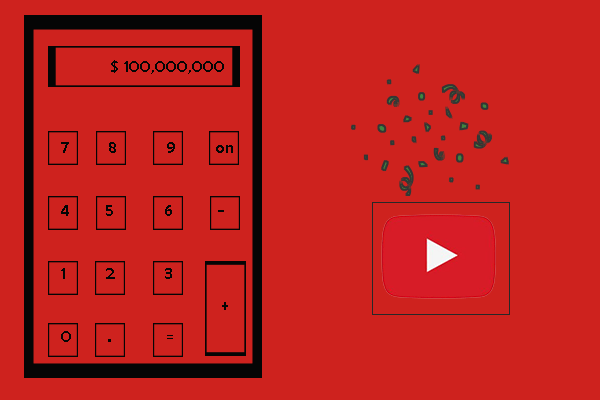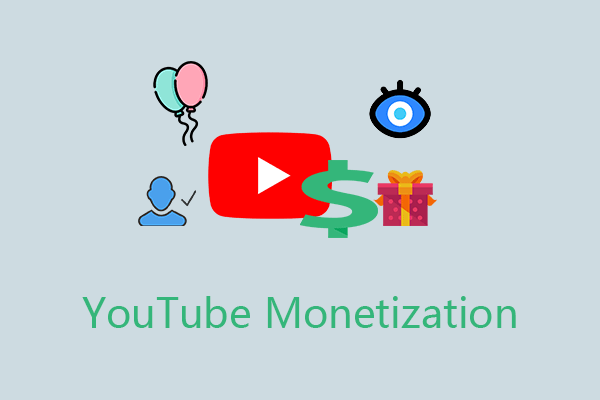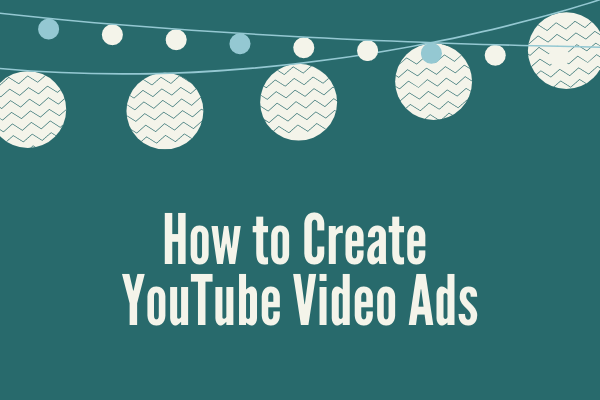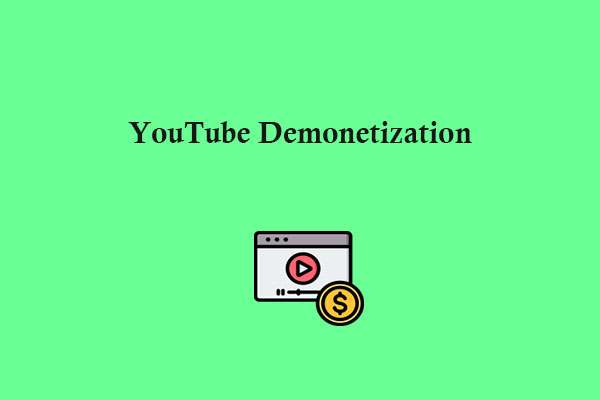Maybe you start a YouTube channel and make some videos. You notice that you’re getting more subscribers, and you’re starting to see good view statistics for each of your videos, but you haven’t made any money from your videos yet. Here’s a guide to show you the mechanics of how to set up and the tip for monetizing YouTube.
5 Tips for Monetizing YouTube
If you want to know how to make money on YouTube, the following part will tell you.
#1. Build up Your Audience
You can make a lot of money online, but it takes time. Just as it takes time to build a website or blog, to make it popular and profitable, you must build an audience on YouTube before you can make money.
A possible exception to this rule might be if you’ve built a reputation in another role first. In this case, you can easily migrate existing fans or audience to your new video channel.
Before monetizing YouTube, you need to build a library of high-quality videos for a specific audience and promote those videos through social media or whatever you can think of to gain a subscriber base.
#2. Set up Your Channel for Monetization
Once you have an audience, you can start thinking about monetizing YouTube. YouTube has a formal process that you need to go through before you can do so.
The first step is to join YouTube Partner Program. Then you should set up an AdSense account, if you don’t already have one. You need to tell Google where you intend to use ads (in this case, your YouTube channel).
It’s important to note that you can’t monetize a video with someone else’s copyrighted material. This includes background music even if you legally buy it from somewhere like the iTunes store.
#3. Choose the Ad Formats
Remember that you won’t make money just from advertising. To make money, the audience must actively interact with the ad in some way.
The Ad Options:
- Display ads next to the video: you will be paid when the viewer sees or clicks on the ad at the advertiser’s discretion.
- Overlay ads (small ads at the bottom of the video): you get paid only when the viewer clicks on the ad to expand it.
- Skip video ads (viewers can skip ads at the beginning of a video after 5 seconds): you’ll get paid if your viewers watch the entire ad, or at least 30 seconds, if it’s longer. These are the most common types of YouTube ads.
- Non-skipped video ads (at the start and viewers can’t skip over) and Bumper ads (short ads at the beginning of a video on a mobile device): you get paid if the audience watches the entire ad.
- Midroll ads (in the middle of longer videos): payment depends, but usually the viewer must watch the entire ad for at least 30 seconds.
If you want to use non-skippable ads, be careful. You need to build a dedicated audience who loves you. Most people don’t have the patience to sit through a non-skippable unless they really want to watch your videos.
#4. Meet YouTube’s Advertiser-friendly Content Guidelines
Just because you’ve monetized your video doesn’t guarantee that AdSense will serve you with ads. They will only place ads in your videos for brands that are willing to work with you. You need to make sure your videos meet YouTube’s Advertiser-friendly Content Guidelines.
In short, advertisers are unlikely to advertise on your video if they include any of the following:
- Controversial or sensitive topics and events
- Inappropriate language
- Promotion of drugs and regulated substances
- Sexually suggestive content
- Violence
Of course, in some cases, this will depend on your target audience. If you really want to be successful in monetizing YouTube, you need to cater to a popular demographic.
#5. Measure Your Performance and Make Improvements
YouTube gives you some analytical tools to help you measure how profitable your videos are. You can view the estimated revenue from your channel and videos in the YouTube Analytics Revenue report.
This indicates that any applicable estimate:
- Revenue from all Google-sold advertising sources in selected date range and region.
- Advertising revenue is divided into AdSense revenue and DoubleClick revenue.
- Transaction revenue from YouTube Rentals
- Revenue from YouTube Red for the selected date range and region.
You can only see the estimated results in this analysis report. You’ll find the monthly income report available for download about 10 days after the end of the month.
You will also receive an Ad Rates Report. This provides data on YouTube ad revenue, estimated monetization of playback, CPM and ad impressions of the ads running on your content. You can use it to compare the performance of the different d types you use over a period of time, and therefore modify your ad type selection.
Bottom Line
To sum up, that’s all the tips for monetizing YouTube. If you really want to be successful in monetizing YouTube. They can help you a lot.






